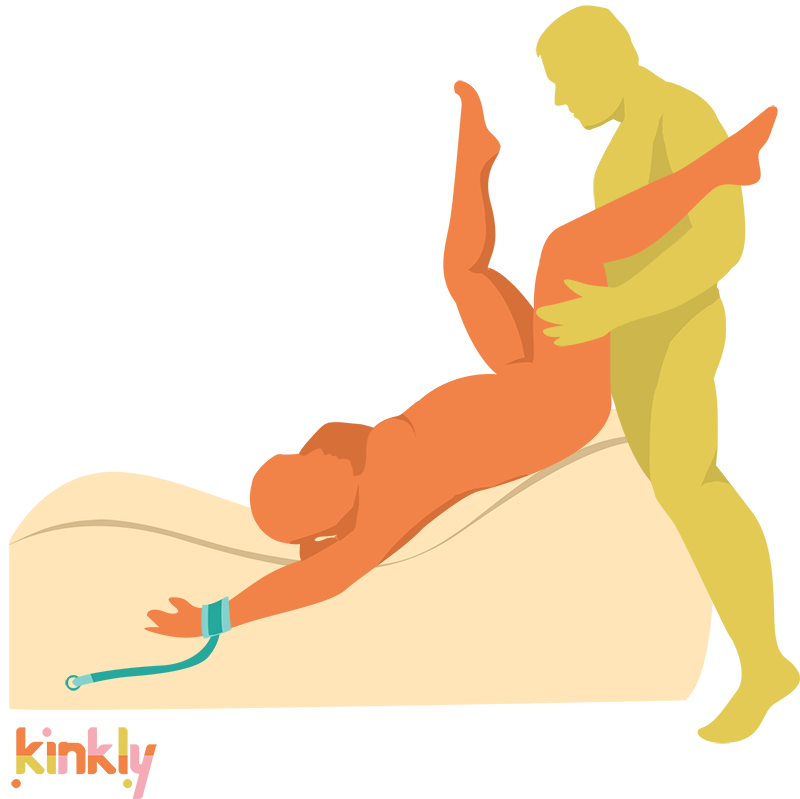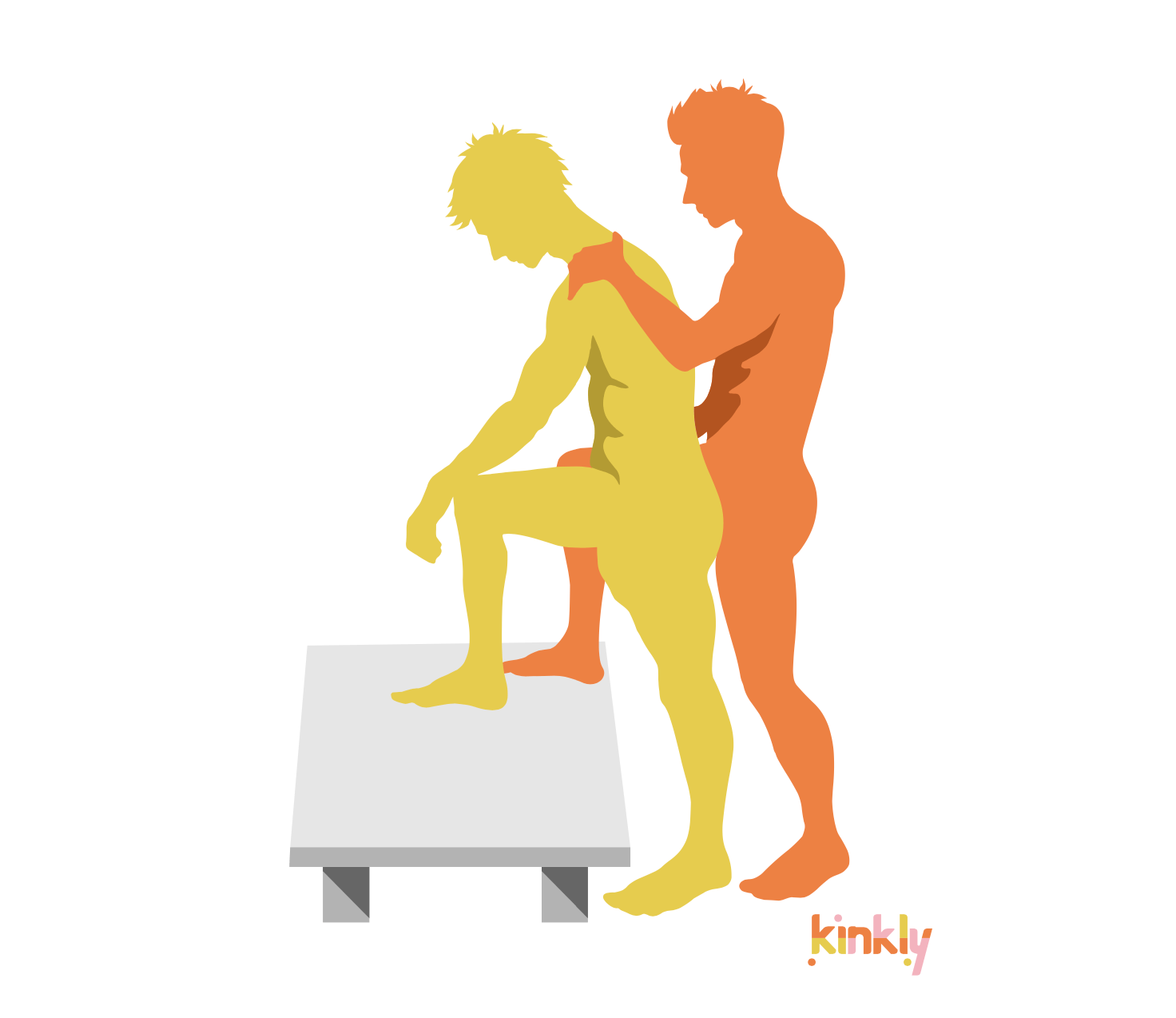The more extreme side of BDSM has a particular allure that draws many of us, like moths to a flame. While there are many myths and misconceptions about BDSM in general, there are even more about the more extreme corners of the BDSM community, often referred to as edgeplay.
A gentle way for beginners to introduce themselves to edgeplay, such as knife play or gun play, can be through romance books such as The Cat and Mouse Duet by H. D. Carlton or The Ritual by Shantel Tessier.
If you're curious about knife play, it's essential to learn everything you can before you get started so you can play safely. To help you in this endeavor, we did the reading, spoke to the experts, and compiled all the information you need to get started.
What is Knife Play?
Knife play is a type of kinky play that involves using any blade, such as a knife, to create a physical and psychological reaction in your partner.
The blade is usually used to create fear and excitement rather than actually cut the skin.
During a knife play scene, the blade can be used to:
- Cut off clothing or bondage ropes
- Subdue or tease your submissive
- Removing wax from wax play
- Tease the submissive with sensation play by lightly tracing the knife along their skin
- As an aid for temperature play
- Create small cuts during a scene
Dr. Celina Criss, a certified sex coach and Executive Director at the World Association of Sex Coaches, says “Light tracing and pressure, not breaking the skin, is where many people keep this practice – it is enough for an erotic charge with less risk of harm."
Why are people into knife play?
"What do I find so appealing about BDSM?"
Many of us have asked ourselves this question at some point. To understand the psychological aspects of this fetish, we spoke to Rose Rivera, MMED Family and Sexuality Studies and Founder of Submissive Academy.
“There's a lot of taboo around knives," she says. "When we're little, we're told not to play with knives, and so a lot of the times in our sexuality, we take the things that we weren't supposed to do that were taboo."
Knife play is an extremely erotic and thrilling experience, partially because it does have an element of danger. But it's controlled danger, with a partner you trust not to cross your boundaries. Rivera points out that a well-orchestrated knife play scene can actually deepen trust between partners.
“So if you're doing it in a very intentional, trustful way, it could be there's a lot of eye contact, there was a lot of talk beforehand about what you were going to be doing, why you were going to be doing it, and it can really become a moment of deep connection for the people involved... And there's actually no fear when you're doing it with the trust aspect."
Read More: Edgeplay: Exploring the Outer Reaches of BDSM
Safety First: The Non-Negotiables
Knife play on its own can be risky and dangerous if not handled properly. So, you need to be extra careful and meticulous during knife play scenes.
Negotiating the scene
As with all kinds of BDSM scenes, you will need to sit down and discuss all aspects of the scene with your partner. The discussion should include expectations about the scene, safewords that will be used and boundaries. Your aims and desires are unique in knife play, so careful, clear negotiation is required before each scene.
A particularly important thing to discuss during scene negotiations is the receiver's mobility throughout the scene.
As Rivera points out, “There can be a lot of mobility on the person who is receiving the knife play. And so that's a big thing to consider is that how much is that person able to control themselves physically when there is heightened fear, or they are being triggered? And how much restrictive body movement do you want to have during this particular game or scene or whatever you want to call it? Because that could be a big factor, you know, you get scared, you move, you jump, and that could be very problematic."
Besides setting the scene, there are a few safety precautions that you should take before and during a knife play scene.
Types of Knives
With the risks involved with knife play, it's important to consider what kind of blade you want to use. Small blades such as a scalpel or a small straight-edge knife can be a good place or start. When using real blades, the dominant or top will need to be extra careful to avoid harm that wasn't specifically consented to in scene negotiations.
To prioritize safety, especially when first experimenting with knife play, you can use a dull blade or even a fake blade. Alternatively, you can use safer tools that give the illusion of knife play.
Rivera suggests changing the scene "a little bit to be a little bit more safe, especially for playing with fear element. In that you could have somebody blindfolded, and they see the knife, they think it's a knife, but really what you are putting sensation-wise on the skin might be a toothpick, right? Something much less dangerous, something creative that feels when your brain thinks it's a knife, it feels like a knife, but it's actually not a knife. So there's that sensation element as well."
Sterilization
When practising BDSM, the health and safety of your partner should be a priority. Before engaging in any BDSM scene, you should take the time to clean and sterilize all tools and toys that you are using to reduce the risk of any infections. The easiest way to clean your blades is to use a chlorine solution or rubbing alcohol.
Aftercare:
Aftercare is essential for all BDSM play, but it's even more crucial when you're doing edgeplay. After an intense BDSM scene, the receiver/submissive is bound to feel more sensitive and vulnerable, and the giver/dominant is responsible for providing comfort, physical and emotional reassurance, and a source of stability in the form of aftercare.
Read More: 5 Tips For Practicing Intentional Aftercare
Getting Started: Basic Techniques
On the surface, acting out a knife play scene can be daunting. If you are a beginner to knife play, it's ideal to play with a partner who knows the ins and outs of using knives in BDSM scenes. If you're both beginners, you can watch knife play videos and read articles (like this!) to learn the basics, but proceed with extra caution.
So, what are some easier knife play techniques?
A good starting point is to play with the psychological aspects of knife play. Play on your partner's fear and build tension. Ideally, start off slow and gradually build tension and intensity as the scene plays out.
Criss suggests, "Blindfolding the receiving partner and sharpening a knife where it can be heard can build tension and fear in a scene. This can be especially fun in a role play involving intimidation or interrogation."
Intermediate and Advanced Techniques
Depending on your experience level, trust, and commitment to your partner, you might be more adventurous and want to try more complex knife play techniques.
Blood Play
In some cases, you might, very carefully, explore actually cutting the skin and making the receiving partner bleed. This advanced form of knife play is known as blood play, which includes any sexual activity that involves blood. While blood play is linked to knife play, it doesn't always mean cutting skin and drawing blood. In some cases, blood play means smearing small amounts of blood across your skin or even engaging in sex during menstruation.
One of the more advanced types of knife play can be cutting or carving. However, you need to be more cautious.
Rivera points out, “You wouldn't be breaking into anything major in terms of what's underneath the skin. And you would want it to be as superficial of a cut as humanly possible for those sorts of things. And obviously, you're starting, I mean, you're starting and ending small. You would never want to do a big cut. But like you were saying, even a pinprick starting point.”
While this riskier version of knife play can be thrilling, knowing how to handle a knife safely is vital. When using a knife, the partner wielding the blade should study the art of knife play, or better yet, turn to a more experienced person who can coach and mentor them.
“It cannot be said enough: know exactly what you plan to do, how to do it safely, and what to do if something goes wrong,” says Dr Criss. She reiterates that it is essential to “negotiate thoroughly with your partner before engaging in this sort of play; learn from someone with experience if possible. If you are cutting, make sure you have accurate medical information and hygiene protocols, and both partners understand the potential risks of this activity."
Impact play and bondage
If you and your partner(s) are into impact play and bondage, you can cautiously add these in to enhance a knife play scene.
You could alternate sensation play by switching between using the blade their skin and spanking them with a paddle. You could also use a dull blade to provide light impact.
You could also engage in knife play while the receiver is bound, but be sure that they can be released quickly, in case anything goes wrong during the scene. Avoid complex bondage positions when doing knife play unless you and your partner(s) are experienced with both knife play and bondage.
Mental Health Considerations
Though knife play often involves fear and intimidation, "there can also be tenderness, gentleness, focus, release, bonding, and intimacy available in this practice. It all depends on what the partners are choosing to create in their practice together,” says Dr Criss.
However, knife play can also bring up past trauma for both the receiver and the giver.
“Knife play can really trigger things in your partner that you don't know about their past,” says Rivera. “There could be abuse. There could be other kinds of traumatic events that had not just knives but other dangerous weapons involved because they can all kind of be put together. So, if there was gun violence in the past, a knife might also trigger those kinds of traumas for your partner. So definitely know what might be the source of why they want to do knife play, but also what potentially could bring up in terms of a negative emotion or a negative memory.”
Some trauma survivors may find knife play healing, though. A 2021 study found that engaging in BDSM and kink assisted abuse survivors in actively healing and rediscovering their power and agency.
That being said, it is better to seek support from professionals. Some of the places that you can turn to include:
The Bottom Line
Knife play is one of the more erotic and titillating practices within BDSM. Whether you’re aiming for a more gentle approach by light tracing or taking to cutting, the act is bound to leave your partner dripping and wanting more.
As with all BDSM play, safety comes first. You need to be cautious and ensure your partner consents to every act you do during the scene.


















